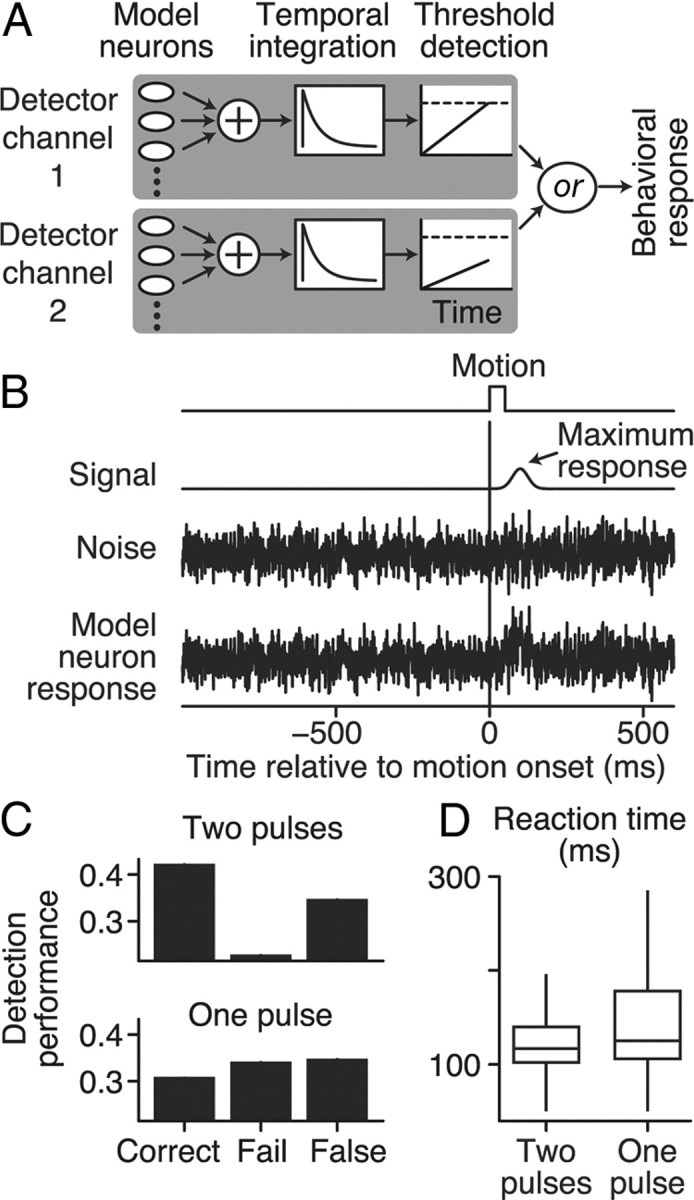Figure 4.

The computational model and its detection performance. A, Schematic of the causal, feedforward detection model. Two identical independent detector channels integrated sensory information from a pool of 200 noisy model neurons. Model neurons in each pool were continuous random variables with correlated Gaussian noise (Pearson's correlation = 0.12). There was no correlation between model neurons in separate detector channels. Each sensory pool was summed and temporally integrated using an exponential function with a time constant of 60 ms. If the integrated signal reached a threshold level (dashed line), then the detector channel triggered a behavioral response from the model. The output of the two detectors was combined using an or function so that either channel could trigger the model to respond. B, Example of the response of a single model neuron. Gaussian noise (0 mean, variance of 1) was added to the motion pulse response (signal). The model was optimized to mimic the monkeys' two-pulse detection performance (Fig. 1C) by varying two free parameters: threshold level (dashed line in A) and model neuron maximum response (arrow in B). C, The behavioral performance of the optimized model for the one- and two-pulse conditions averaged over 250,000 trials. D, Box and whisker plots (median, upper/lower quartiles, and spread) of the detection times of the optimized model.
